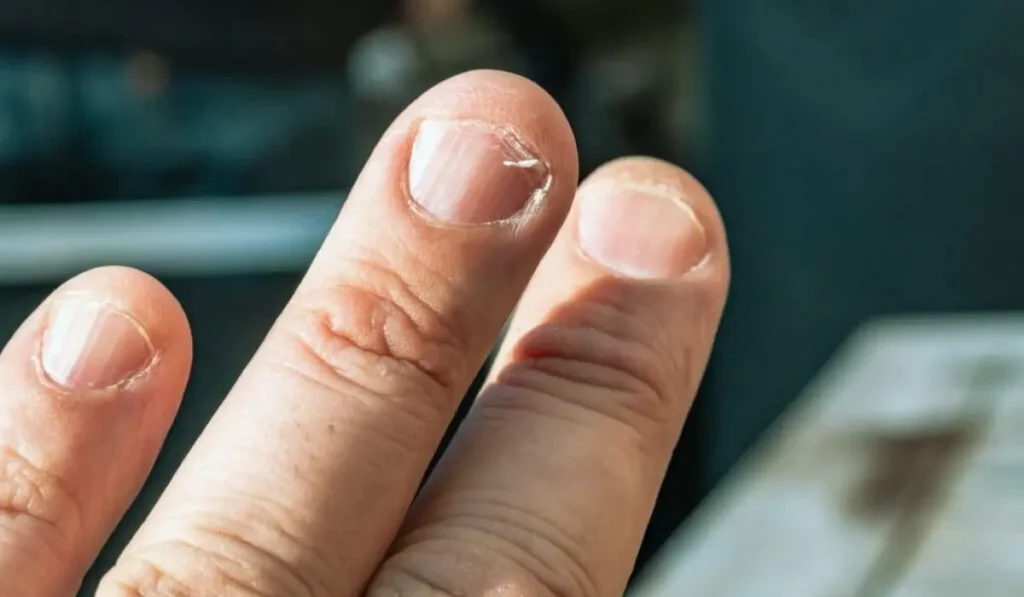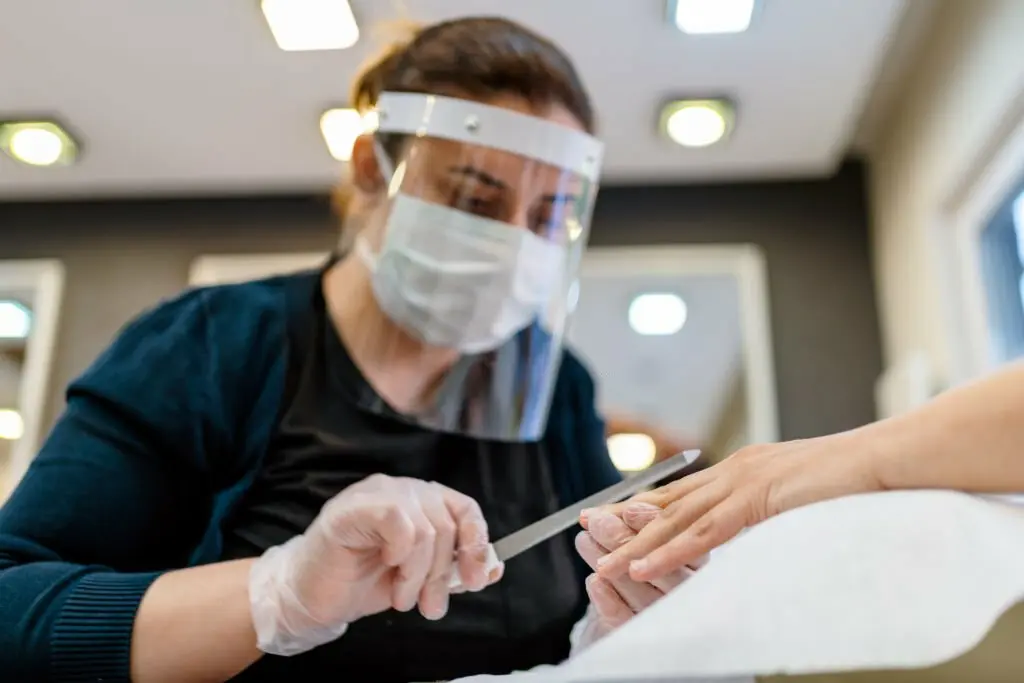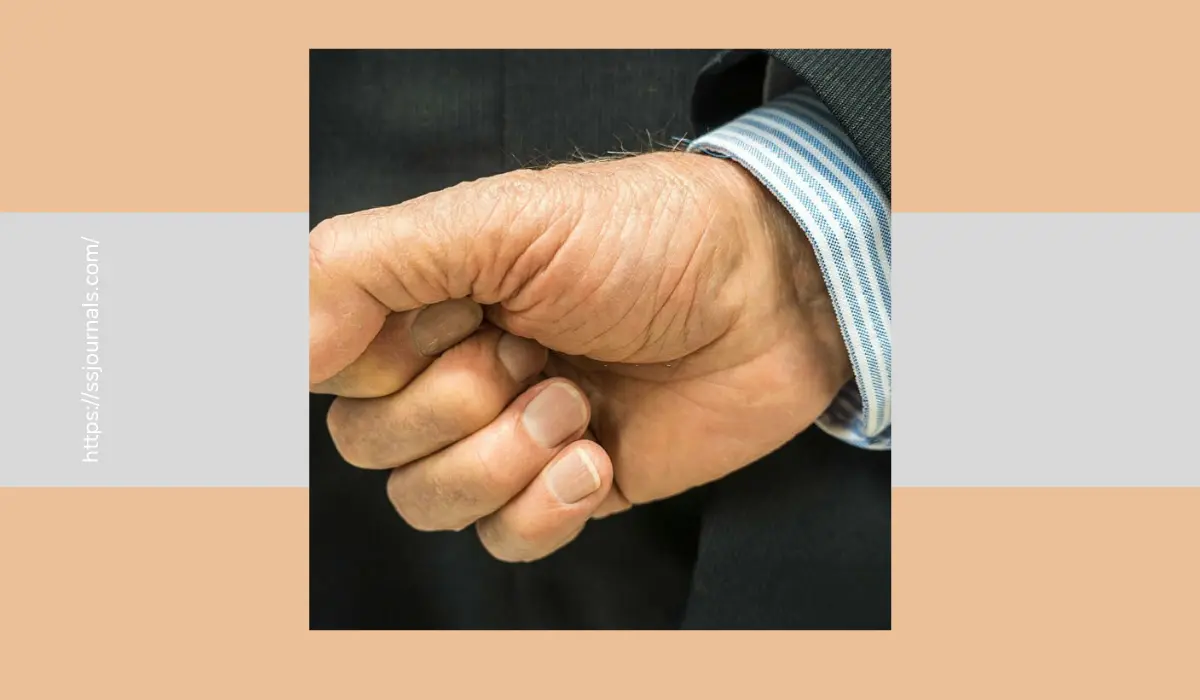Our nails, those tiny protectors at the tips of our fingers and toes, often surprise us with little quirks. Sometimes, we spot imperfections a chip, a ridge, or a black line on the nail. In this article, let’s unravel the story behind this intriguing black line, understand what it means for your health, and when it’s a good idea to chat with a healthcare expert.
The Wonderful World Of Nails
Before we dive into the mystery of black lines, let’s appreciate the amazing world of nails. These hardy layers of keratin, known as the nail plate, guard the nail bed beneath. Changes in their color or texture can be our body’s way of waving a flag.
Common Causes Of Black Lines On Nails
- Nail Trauma: Think about the times you’ve stubbed your finger or had something heavy drop on your nail – it happens to us all. These minor accidents can rupture the tiny blood vessels under your nail (subungual blood vessels), leading to that unmistakable black or purple line.

- Melanonychia: Melanonychia is when pigmentation shows up in your nail. It could be a harmless pigment streak or a potential sign of something more serious, like melanoma. There are two types: longitudinal melanonychia, running from the base to the tip of the nail, and transverse melanonychia, crossing the nail horizontally.
- Medications: Certain medications, such as antimalarials or chemotherapy drugs, can unexpectedly change the color of your nails, including the arrival of black lines.
- Fungal Infections: Fungal infections are crafty, affecting not just the skin but also the nails, causing discoloration and the appearance of black lines.
- Nail Psoriasis: Those battling psoriasis might encounter pitting, discoloration, and ridges in their nails, which can sometimes result in the appearance of black lines.
- Lentigo: On a more pleasant note, a black line on the nail might be a lentigo, a benign skin growth beneath the nail. These are typically harmless and have no cause for concern.
When To Seek Medical Attention
If a black line appears on your nail, it’s important not to brush it off. While many cases are harmless and fade with time, some may indicate a deeper issue. Here are some signs that it’s time to have a chat with a healthcare professional:
- Unexplained Appearance: If a black line shows up on your nail without a clear cause or any trauma, it’s a good idea to have a healthcare professional take a look.
- Changes in the Line: Keep an eye out for shifts in size, shape, or color of the black line. If it becomes irregular, changes borders, or shows uneven characteristics, it could be a sign of melanoma.
- Accompanying Symptoms: Seek advice from a doctor if you have pain, bleeding, or anything else along with that black line.
- Family History of Skin Cancer: Hence, if you have a personal record of skin cancer or a family history of melanoma, be as careful as possible about an alteration in your nails.
Diagnosis and Treatment – Your Nail’s Journey
When you do seek medical attention for that black line on your nail, a healthcare provider will take you on a journey of discovery. They may review your medical history, perform a thorough physical examination, and possibly recommend a biopsy to rule out melanoma. Treatment depends on the root cause:
- Nail Trauma: If the black line is a result of trauma, no specific treatment is typically needed. As your nail grows out, the line will gradually fade away.
- Melanonychia: For melanonychia, treatment varies according to the cause. If it’s benign, no treatment may be necessary. If melanoma is suspected, your healthcare provider may suggest surgical removal of the affected tissue.
- Medications: If medications are behind the black line, your healthcare provider may consider adjusting your medication or recommending alternative treatments.
- Fungal Infections: Fungal infections often require antifungal medications to treat the nail.
- Nail Psoriasis: Treating nail psoriasis is a bit like conducting a complex symphony. It may involve topical or systemic medications to soothe the symptoms.
- Lentigo: Lentigines are usually harmless and typically don’t require treatment unless they become bothersome.
Preventing Nail Issues – TLC For Your Nails
Caring for your nails is a small act of self-love. Here’s how you can show your nails some kindness:

- Protect Your Nails: Whether you’re digging in the garden or tackling household chores, safeguard your nails by wearing gloves. It’s a simple act of kindness for your hardworking hands.
- Maintain Proper Hygiene: Make sure they are always clean and dry. Excessive application of nail polishes and fake nails should be avoided because they tend to trap moisture and lead to the eventual development of a fungus infection.
- Healthy Diet: Feed Your Nails: Your nails will be in good shape if you take a balanced diet that includes many minerals and vitamins, including biotin, which is also a B vitamin.
- Stay Hydrated: Proper hydration helps to keep the nails well-moistened in order to maintain them in good and strong condition.
- Quit Smoking: This is another reason to give up smoking, as it could affect the condition and appearance of your nails.
- Manage Stress – For You and Your Nails: Chronic stress can wreak havoc on your health, including your nails. Practicing stress management techniques is a form of self-love that benefits your entire body.
Conclusion
A black line on the nail can have various causes, from minor trauma to potentially serious medical conditions. Regularly inspecting your nails and being in tune with any changes is a form of self-care. If a black line captures your attention, don’t hesitate to consult a healthcare professional for a proper diagnosis and guidance. Early detection and appropriate treatment can make a profound difference in your overall health and well-being. Remember that your nail health isn’t just about appearances; it’s a message from your body, and it’s worth listening to.
FAQ
Common causes include nail trauma, pigmentation (melanonychia), medications, fungal infections, nail psoriasis, and benign skin growths (lentigo).
No, many are harmless, often due to minor trauma. The concern arises when the line changes or if there are accompanying symptoms.
Seek help if the line appears suddenly without a clear cause, or changes, or if you have pain, bleeding, or a family history of skin cancer.
Diagnosis involves a medical review and possibly a biopsy. Treatment varies based on the cause and may include surgery or medication.
While you can’t prevent all backlines, you can protect your nails from trauma and maintain nail health through good hygiene and lifestyle choices.

